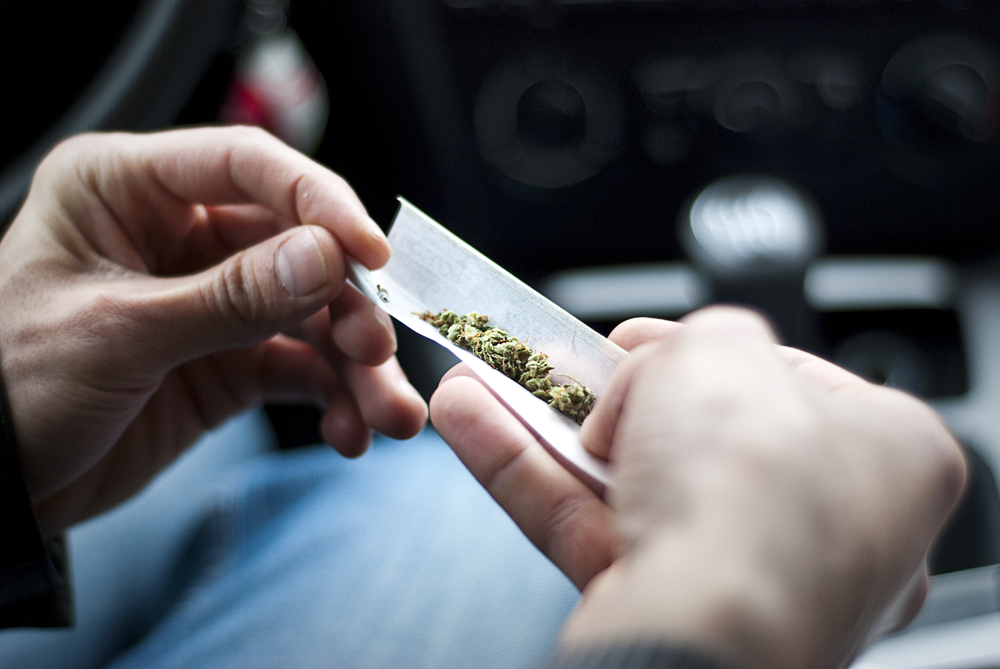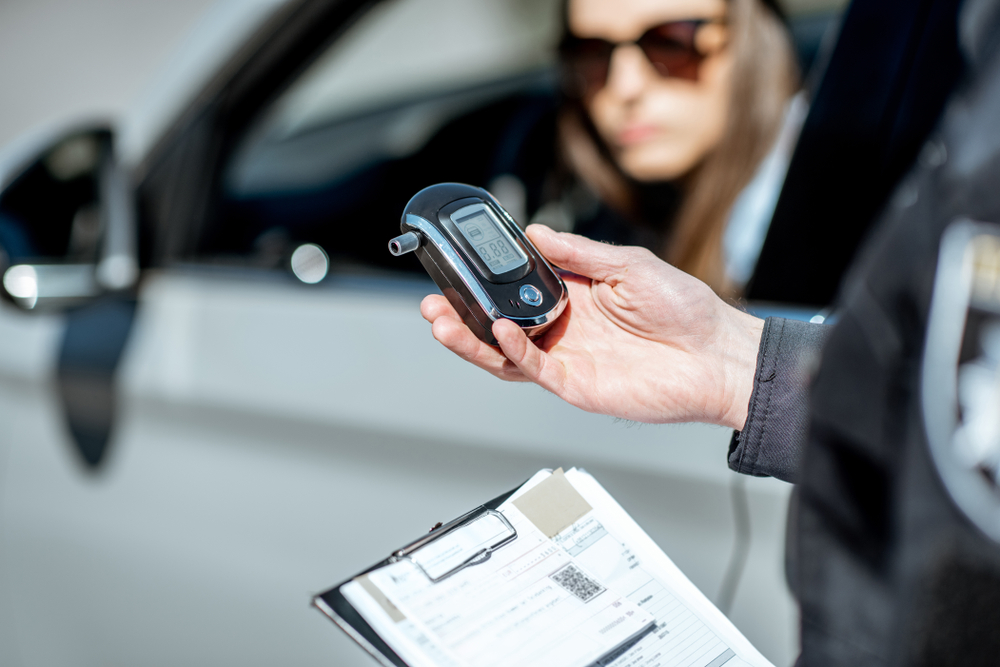Those of legal age are likely already familiar with the concept of a breathalyzer in the context of alcohol. But what about a weed breathalyzer?
While commonly used by law enforcement today, the invention of the former was a long and drawn-out process that spanned over multiple decades before its implementation, and technological detection criteria were widely accepted.
The concept of a breathalyzer dates back as far as 1927 in an issue of Popular Science, which references a device to ‘test a Tippler’s breath,’ proposing that housewives use the invention from chemist W.D. McNally to see if their husbands had been out drinking.
The idea was developed further by Rolla N. Harger in 1931, who aptly dubbed the device the ‘drunkometer.’
However, the modern-day breathalyzer came to fruition thanks to American inventor, researcher and professor Robert Frank Borkenstein in 1958. Borkenstein developed his rendition of the device by pairing the technologies of a photometer – an instrument that measures the strength of electromagnetic radiation – with a reaction between the alcohol in a person’s breath and potassium dichromate.
This technique provided quantitative measurements of blood alcohol content, providing more accurate insights into how intoxicated an individual truly is on a biological scale.
The invention of the breathalyzer provided a non-invasive means for police officers to quickly and accurately determine whether someone was too drunk to drive, serving as an invaluable tool to help combat drunk driving.
Since then, researchers have transitioned these technologies into a new yet similar device in recent years – a marijuana breathalyzer. More specifically, last week, a team of researchers at the University of Pittsburgh announced their latest THC breathalyzer tool.
Today, we will be discussing the concept of a weed breathalyzer, whether they are effective, how they work, and, finally, key indicators of marijuana impairment.
Without further ado, let’s begin!
Are Weed Breathalyzers Effective?
As we said, it took decades for the alcohol breathalyzer to become the model we know today. With this in mind, detecting marijuana through a breath test to assess impairment will also need to undergo its assortment of various rigorous testing phases to address a distinct set of concerns.
Of these concerns, three specifically stand out.
Firstly, marijuana, more specifically THC molecules, remain in the human body for more prolonged periods than alcohol. For this reason, it’s not as straightforward as merely measuring if or how much marijuana is present in a person’s system.
THC, or tetrahydrocannabinol, is the cannabinoid component of cannabis that induces the ‘high’ effect. What makes its detection complicated in the context of a breath test is that it can stay in the body for upwards of a month, even as the initial effects wear off. So, even if a weed breathalyzer detects the presence of THC, it doesn’t necessarily mean that they are impaired at that moment.
Secondly, it’s a common belief that the amount of alcohol in someone’s blood corresponds to their level of intoxication. However, to reference our last point, the same cannot be said for marijuana in most instances. In other words, a user’s specific body type plays a significant role in the amount of THC detected in their system, as THC is stored in fat cells.

Finally, while 0.08 is the legal limit for blood-alcohol concentration, it’s not as straightforward to determine an acceptable threshold for marijuana. In other words, there is no consensus when it comes to what the legal limit for recreational marijuana should be.
That said, some regions, including Canada, have established legal limits in the context of driving. In Canada, there are two prohibited levels for THC. According to Impaired Driving Laws, it is a less serious offence to have between 2 nanograms (ng) and 5 ng of THC per millilitre of blood. Anything over 5 ng of THC per millilitre of blood is considered a serious offence.
However, the concerns mentioned above are significant obstacles for determining when drivers are actually impaired by marijuana, especially in locations that have enacted marijuana legalization. While you cannot drive while impaired, having THC in your system does not necessarily indicate present impairment.
These questions considered, it may take longer to authentically determine the efficacy of weed breathalyzers for widespread use, particularly in the context of laws and law enforcement.
Is There More Than One Kind of Marijuana Breathalyzer?
Over the years, multiple research teams have been vying to create the first operational commercial marijuana breathalyzer.
For example, based in Oakland, California, Hound Labs anticipates a springtime release for its Hound Marijuana Breathalyzer. Dr. Mike Lynn, an emergency room physician and CEO and co-founder of Hound Labs, told High Times that “production will ramp up throughout the rest of 2021.”
Hound Labs developers believe that THC molecules can linger in the breath for up to four hours after smoking. This information is different from urine-based drug tests, which illustrate whether an individual has practiced marijuana use – or other substances – within the last few weeks. In this context, the user could be dead sober during the test and still fail.
Dr. Lynn explains the breathalyzers’ functionality in the context of employers and workplaces, specifically, stating that its intent is to “maintain safety while recognizing many employees have the right to legally use marijuana.”
That said, while some employers are more lenient towards employees using marijuana in their spare time, this device will help them detect whether they are stoned on the job.
However, the creation of this technology isn’t unique to the United States.
Vancouver, British Columbia-based company Cannabix Technologies has released its THC Breath Analyzer (THCBA) for “beta testing,” according to Chief Executive Officer Rav Mlait. Mlait states that the company’s current objective is focused on receiving field use data from its THCBA devices. From there, this data would be used to “shape” how Canadian processes detect THC intoxication.
Finally, as we initially mentioned at the beginning of this article, there is also a marijuana breathalyzer product recently coming out of the University of Pittsburgh. The university’s Star Lab, led by chemistry professor Alexander Star, started developing its device back in 2016, during the widespread wave of marijuana legalization taking place across the United States.
Star partnered with a professor of electrical and computer engineering Ervin Sejdic, to develop the prototype. In the following section, we will explain how this device, specifically, works.
How Does a Marijuana Breathalyzer Detect Impairment?
The device from the University of Pittsburgh research team spearheaded. Star and Sejdic use carbon nanotubes, which are 1/100,000 the size of human hair, to detect marijuana, more specifically the presence of THC, even when users have other substances in their breath, such as alcohol.
Essentially, the THC molecule, along with other breath molecules, bind to the surface of the carbon nanotubes and alter their electrical properties. From there, the speed at which the electrical currents recover signifies whether THC is present.

Professor Star explained in an official press release that the nanotube sensors could be used to “detect THC at levels that are comparable to or better than current measurements that are considered to be the gold standard, such as mass spectrometry.”
According to an interview between Star and NPR’s Here & Now host, Jeremy Hobson, the device is nearly ready for mass production. According to Star, if they were to find a “suitable industrial partner, then the device by itself would be quite ready in a few months.”
The last remaining steps include testing the prototype and correlating its data output to decipher drivers’ impairment levels. However, as we outlined earlier, this task is easier said than done and not nearly as straightforward as determining a person’s blood-alcohol level.
In the context of marijuana use, as previously mentioned, there is no clear ratio that links the amount of tetrahydrocannabinol in a person’s breath to the amount in their blood, which makes it difficult to dictate precisely how intoxicated they are.
Sejdic explains that this correlation is “basically mixing, from a scientific point of view.”
That said, the pair of professors have determined how to set a threshold on their specific device to detect only a certain level of THC, which they posit will aid in avoiding flagging marijuana use from several days prior.
However, without a more extensive comprehension of the correlation between that amount and a drivers’ impairment level, the device may not be all that useful to police officers on the ground level.
Signs of Cannabis Impairment
Without an accurate breath test, there are other deciphering signs of cannabis impairment, albeit more subjective.
There are classic physical determinants, including cottonmouth, red eyes, poor muscle coordination, delayed reaction times and increased appetite. There are also mental indicators, such as users feeling a sense of panic, anxiety, liveliness, distorted senses, and/or hallucinations, to name a few.
However, arguably the most notable features come at the point where it may be too late to rectify – in other words, a green out. While this condition is not fatal, it can be incredibly unpleasant to the medicinal or recreational marijuana user.
Green outs occur when the body has ingested more cannabis than it’s able to handle, and consuming too much cannabis can lead to a variety of adverse consequences.
Frequent symptoms of a cannabis green out include:
- Anxiety
- Fear
- Paranoia
- Elevated blood pressure
- Increased heart rate
- Upset stomach
- Sweats or chills
- Fatigue
- Alterations to memory, perception of time and attention
- Red eyes
- Cotton-mouth
In the context of green out, these symptoms can last anywhere from 30 minutes up to 6 hours or more. That said, the longevity and intensity of these symptoms depend on how a user’s particular body responds to cannabis.
For more information regarding green out causes, symptoms and treatments, be sure to read our full guide.
Weed Breathalyzers – More Research is Necessary
While the data surrounding various versions of a marijuana breathalyzer are promising, more research is necessary to determine specific intoxication thresholds for impaired driving.
In this way, practical, in-field research with real subjects is the only way to learn how to best gauge these levels appropriately. While some regions, including Canada, have specific thresholds already in place, there is no universal level for marijuana intoxication.
This fact, coupled with the various other concerns surrounding how long THC remains in a person’s symptoms after initial ingestion, causes questions to arise regarding how to be objective and non-discriminatory towards those who engage in recreational cannabis use.
Ultimately, the primary objective of these devices is to measure the medical level of impairment to help actively increase driver safety protocols, update laws, and proactively keep communities, drivers, pedestrians and law enforcement safe.
With so many dedicated researchers working towards creating products that accomplish these goals, it’s only a matter of time until a reliable and accurate weed breathalyzer makes its way onto the market.




 No products in the cart.
No products in the cart.